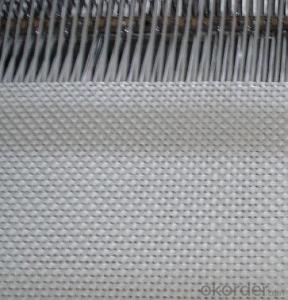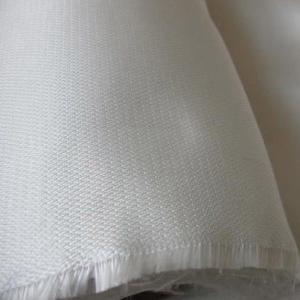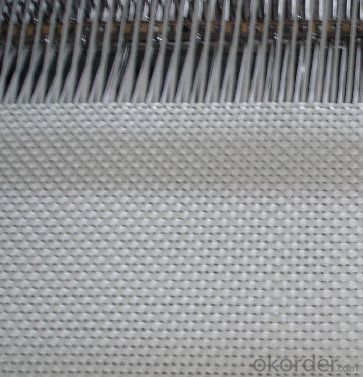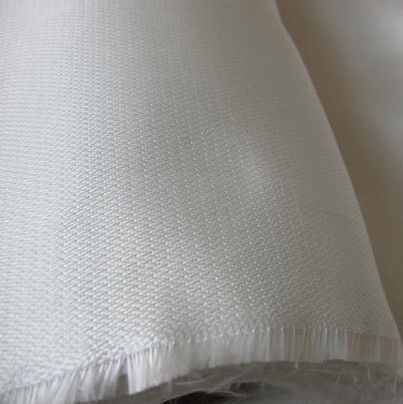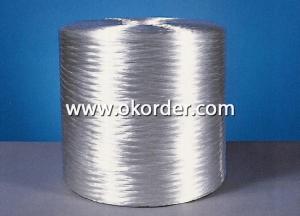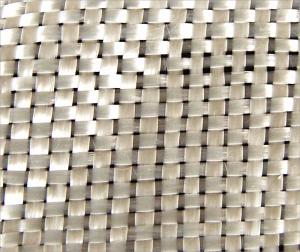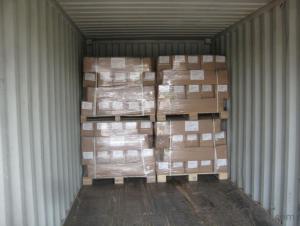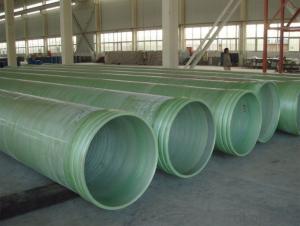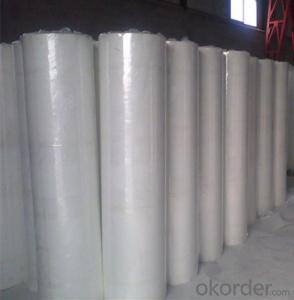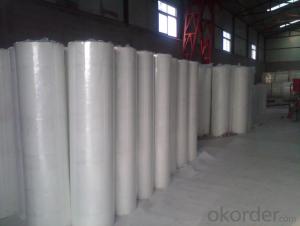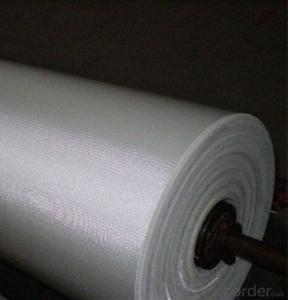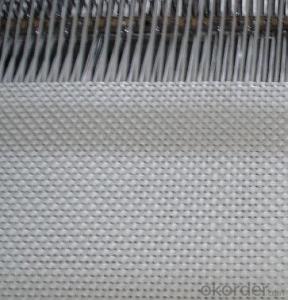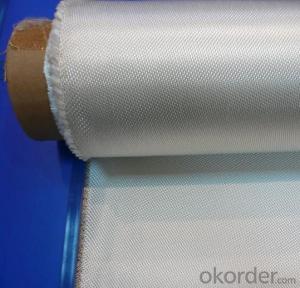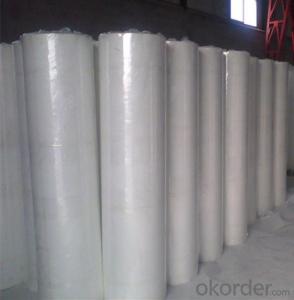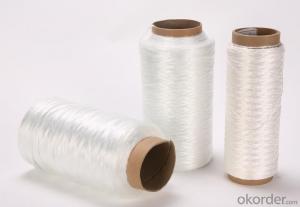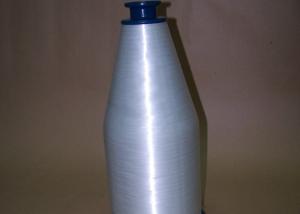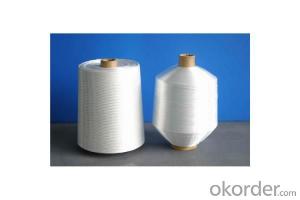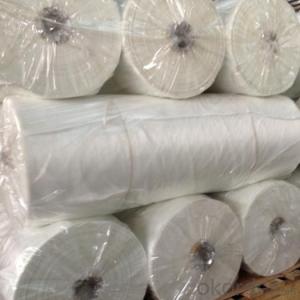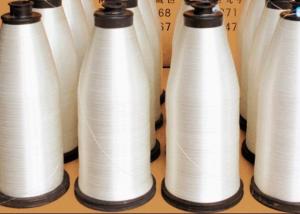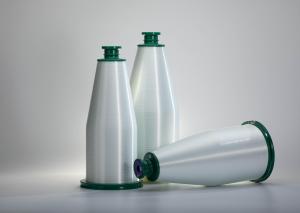Fiberglass Yarn Reinforced Corrosion Resistant Fiberglass Fabric ISO9001
- Loading Port:
- Shanghai
- Payment Terms:
- TT OR LC
- Min Order Qty:
- 500 m²
- Supply Capability:
- 50000 m²/month
OKorder Service Pledge
OKorder Financial Service
You Might Also Like
Fiberglass Fabric for Corrosion Resistant ISO9001
Fiberglass Fabric Introduction:
Fiberglass fabric is weaved by high quality fiberglass,as a kind of engineering material,which is
many excellent characteristics:
flame-resisting,corrosion resistant,high strength,heat resistance.stable structure,good chemical resistance,durability.
Fiberglass Fabric Features:
Warp and weft yarns are parallel arrangement as flat situation, with uniform tension;
Fiber is aligned with large consistency, stable and easy operation;
Good moldability, fast and complete wet out in resins, resulting in high productivity;
Good transparency and high strength of composite products.
Fiberglass Fabric Specification:
mark | Fiber consistency(ends/ cm) |
Area weight (g/ m2) |
Thick-ness (mm) |
Width (cm) |
Length (mm) | Breaking strength(N)≥ |
weave | |||
Warp direction | Weft direction | Warp direction | Weft direction | |||||||
EW200 | 16 | 12 | 200±20 | 0.2 | 90-130 | 300-1200 | 980 | 980 | ||
EW210 | 16 | 12 | 200±20 | 0.21 | 90-130 | 300-1200 | 1080 | 1080 | Twill weave | |
Plain weave | ||||||||||
EWR360 | 3.2 | 1.8 | 354±18 | 0.35 | 50-300 | 100 | 2000 | 2000 | ||
EW280 | 16 | 10 | 280±28 | 0.26 | 90-130 | 300-1200 | 1800 | 1800 | ||
EW300 | 14 | 10 | 320±32 | 0.3 | 90-130 | 300-1200 | 1500 | 1500 | ||
EW430 | 20 | 12 | 420±42 | 0.43 | 90-130 | 300-1200 | 2000 | 2000 | Broken twill | |
EWR136 | 10 | 10 | 136±13 | 0.136 | 100 | 200 | 850 | 850 |
Plain weave | |
EWR200 | 8 | 7 | 200±20 | 0.21 | 100 | 200 | 1200 | 1200 | ||
EWR400 | 3.6 | 3.2 | 400±30 | 0.4 | 100 | 50-100 | 2500 | 2500 | ||
EWR600 | 2.6 | 2.5 | 600±50 | 0.6 | 100 | 40KG | 4000 | 4000 | ||
EWR580 | 2.5 | 2.3 | 576±29 | 0.58 | 100 | 40KG | 3850 | 3850 | ||
EWR800 | 1.8 | 1.8 | 800±60 | 0.8 | 100 | 40KG | 4600 | 4600 | ||
Product Show
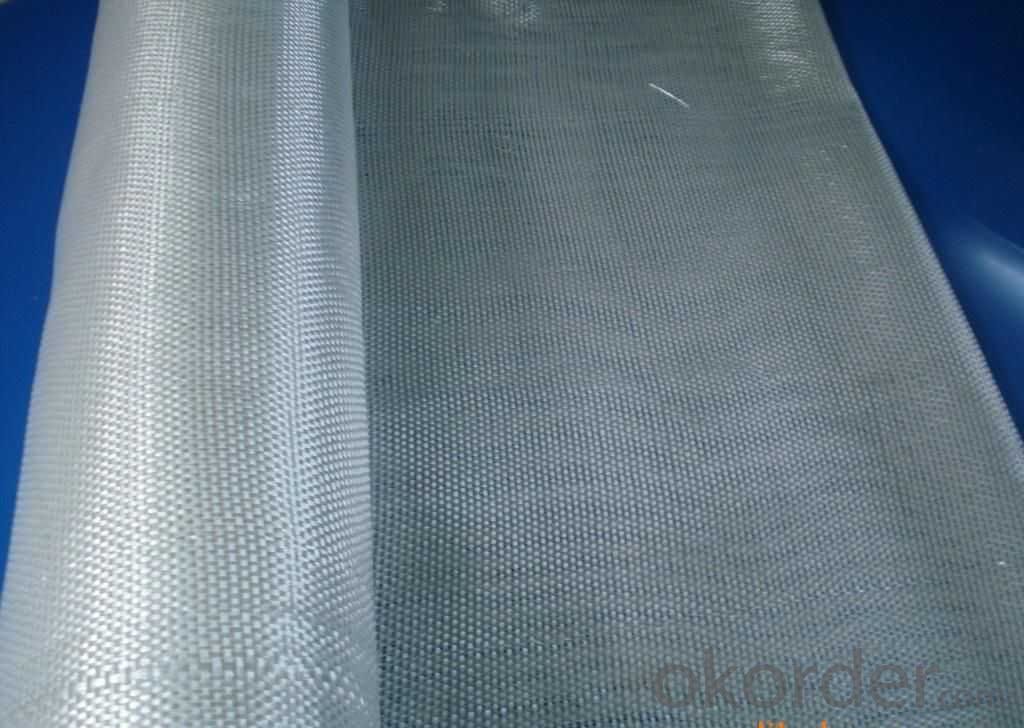
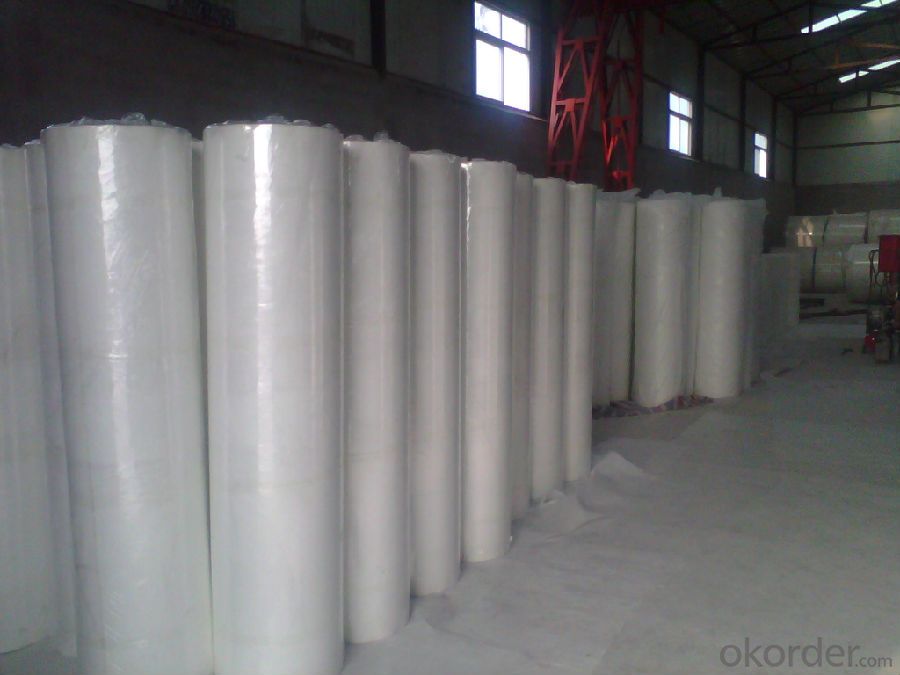
Fiberglass Fabric Usage:
E-glass woven roving is a schistose double faces reinforcement fabric that is weaved into from roving in directly.
E-glass fiber fabric (thin fabrics with thickness from 0.025 to 0.09mm) is suitable for electrical isolation mica product, wax cloth as the reinforcement materials.
E-glass woven roving applys to all kinds of polyester reinforcement system, (such as unsaturated polyester resin, vinylite,epoxy resin and phenolic resin.
E-glass woven roving is a high performance reinforcement material. It is widely used in hand lay-up and machinery processing products, (such as vessel, container, airplane and vehicle component, furniture, athletic facilities and other industry.
FAQ
1.Package of Fiberglass Fabric?
Fiberglass fabric is wound on a paper tube with inner diameters of 50. 8, 76 or 152mm. Each roll is wrapped in a plastic bag, then to be packed in a carton box. The rolls are to be horizontally placed.
Width (cm): 90, 100, 127
Length (m): 100, 200, 300, 400
2.Storage of Fiberglass Fabric?
Store rolls in a cool, dry location
Protect rolls from weather and other damage.
3.If sample available if needed?
We aim to offer our customer best Products&Service,samples are allowed if necessary.
- Q: Can fiberglass yarn withstand high temperatures?
- Yes, fiberglass yarn can withstand high temperatures. Fiberglass is known for its excellent heat resistance properties, making it suitable for various applications where exposure to extreme temperatures is expected. The melting point of fiberglass is around 2000°F (1093°C), which is considerably higher than most other textile fibers. This makes fiberglass yarn a popular choice in industries such as insulation, aerospace, automotive, and fire protection. It can withstand high heat without deforming, melting, or losing its strength, making it a reliable material for high-temperature environments.
- Q: Is fiberglass yarn resistant to tearing or ripping?
- Yes, fiberglass yarn is highly resistant to tearing or ripping due to its strong and durable nature.
- Q: How does the flexibility of fiberglass yarn affect its handling?
- The flexibility of fiberglass yarn allows for easy handling and manipulation, making it more convenient to work with in various applications.
- Q: How does the resistance to fatigue of fiberglass yarn compare to other materials?
- Fiberglass yarn has a high resistance to fatigue compared to other materials. It is known for its durability and ability to withstand repeated stress and strain without breaking or losing its strength. This makes it an excellent choice for applications where fatigue resistance is crucial, such as in the construction industry or for reinforcing materials in composites.
- Q: Is fiberglass yarn suitable for high-speed weaving processes?
- Indeed, fiberglass yarn is perfectly compatible with high-speed weaving procedures. Renowned for its robustness, longevity, and ability to withstand heat, fiberglass yarn is unquestionably the optimal selection for high-speed weaving. The remarkable strength of fiberglass yarn enables it to endure the rapid motions of high-speed weaving machines without succumbing to breakage or unraveling. Furthermore, its heat resistance guarantees that it can endure the elevated temperatures generated by the weaving procedure without succumbing to melting or distorting. Consequently, fiberglass yarn emerges as an exceptional preference for industries necessitating expeditious and efficient weaving processes, such as textile manufacturing, automotive, aerospace, and construction.
- Q: Can fiberglass yarn be used in acoustic insulation?
- Acoustic insulation can indeed utilize fiberglass yarn. The exceptional sound absorption properties of fiberglass make it a favored material for this purpose. Fiberglass yarn can be skillfully woven into different shapes, like mats or boards, and employed as a component in acoustic panels or insulation materials. The yarn's fibrous structure effectively captures and absorbs sound waves, diminishing noise transmission and improving soundproofing abilities. Moreover, fiberglass exhibits fire resistance and durability, rendering it an appropriate option for acoustic insulation in buildings, industrial environments, or the automotive industry.
- Q: How does the cost of fiberglass yarn compare to other types of yarn?
- Compared to other yarn types, fiberglass yarn tends to have a higher cost. This is primarily due to its unique properties and manufacturing process. To create fiberglass yarn, thin strands of glass fibers are carefully processed and spun. Specialized equipment is necessary to ensure the fibers remain intact and undamaged during production. Additionally, the raw material used in fiberglass yarn, glass, is generally more expensive than other natural or synthetic fibers commonly used in yarn manufacturing. Consequently, fiberglass yarn is typically more costly than other types of yarn, making it less common for general knitting or crocheting projects. However, it is highly sought after in certain industries or specialized applications, thanks to its specific qualities such as strength, temperature resistance, and insulation capabilities. This makes it valuable for reinforcing composites, insulation, or electrical components.
- Q: Is fiberglass yarn resistant to pilling or fuzzing?
- Yes, fiberglass yarn is highly resistant to pilling or fuzzing. Unlike natural fibers such as cotton or wool, fiberglass yarn is made from synthetic materials that are extremely durable and do not easily break or fray. This makes it highly resistant to the formation of pills or fuzz on the surface of the yarn. Additionally, the smooth and sleek nature of fiberglass yarn further prevents the accumulation of loose fibers or lint. As a result, fiberglass yarn maintains its original appearance and texture for a longer period of time, making it an excellent choice for products that require high resistance to pilling or fuzzing, such as upholstery fabrics, outdoor textiles, or industrial applications.
- Q: Can fiberglass yarn be used in automotive exhaust systems?
- No, fiberglass yarn cannot be used in automotive exhaust systems. It is not suitable for high-temperature environments and may melt or emit harmful fumes when exposed to the extreme heat generated by exhaust systems.
- Q: How does fiberglass yarn affect the thermal conductivity of a product?
- The thermal conductivity of a product is greatly influenced by fiberglass yarn. With its high insulation properties and low thermal conductivity, fiberglass yarn serves as an effective barrier against heat transfer. When utilized in the production of various materials like insulation materials, textiles, or composite materials, it significantly diminishes the rate at which heat is transmitted through the product. When it comes to fiberglass yarn, its ability to conduct heat is known as thermal conductivity. Its structure is composed of tightly woven glass fibers that enclose air within the material. Since air is a poor heat conductor, the trapped air pockets create a thermal barrier. This distinctive structure enables fiberglass yarn to restrict the transfer of heat energy, resulting in outstanding thermal insulation properties. Incorporating fiberglass yarn into a product effectively decreases its thermal conductivity. This means that the material allows less heat to pass through, preventing heat loss or gain. As a result, the use of fiberglass yarn can enhance the energy efficiency of several applications, including building insulation, thermal clothing, and aerospace components. Additionally, the low thermal conductivity of fiberglass yarn also contributes to its fire-resistant properties. Its high resistance to heat and flames makes it an ideal choice for applications that prioritize fire safety. Its ability to slow down the spread of heat provides better protection against fire hazards. To summarize, fiberglass yarn has a significant impact on the thermal conductivity of a product. Its unique structure and insulation properties greatly reduce heat transfer, making it an excellent option for applications that require thermal insulation, energy efficiency, and fire resistance.
Send your message to us
Fiberglass Yarn Reinforced Corrosion Resistant Fiberglass Fabric ISO9001
- Loading Port:
- Shanghai
- Payment Terms:
- TT OR LC
- Min Order Qty:
- 500 m²
- Supply Capability:
- 50000 m²/month
OKorder Service Pledge
OKorder Financial Service
Similar products
Hot products
Hot Searches
Related keywords
